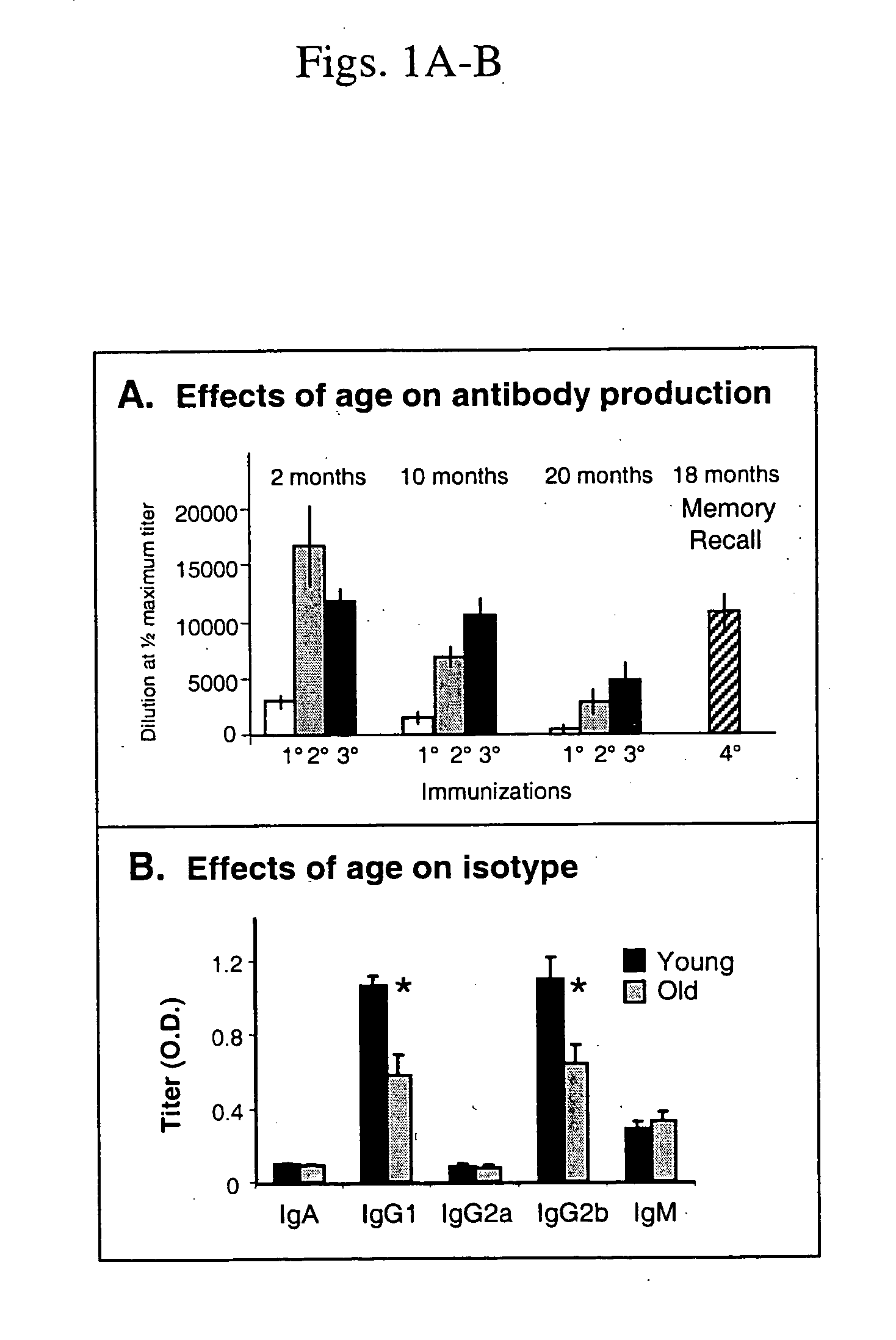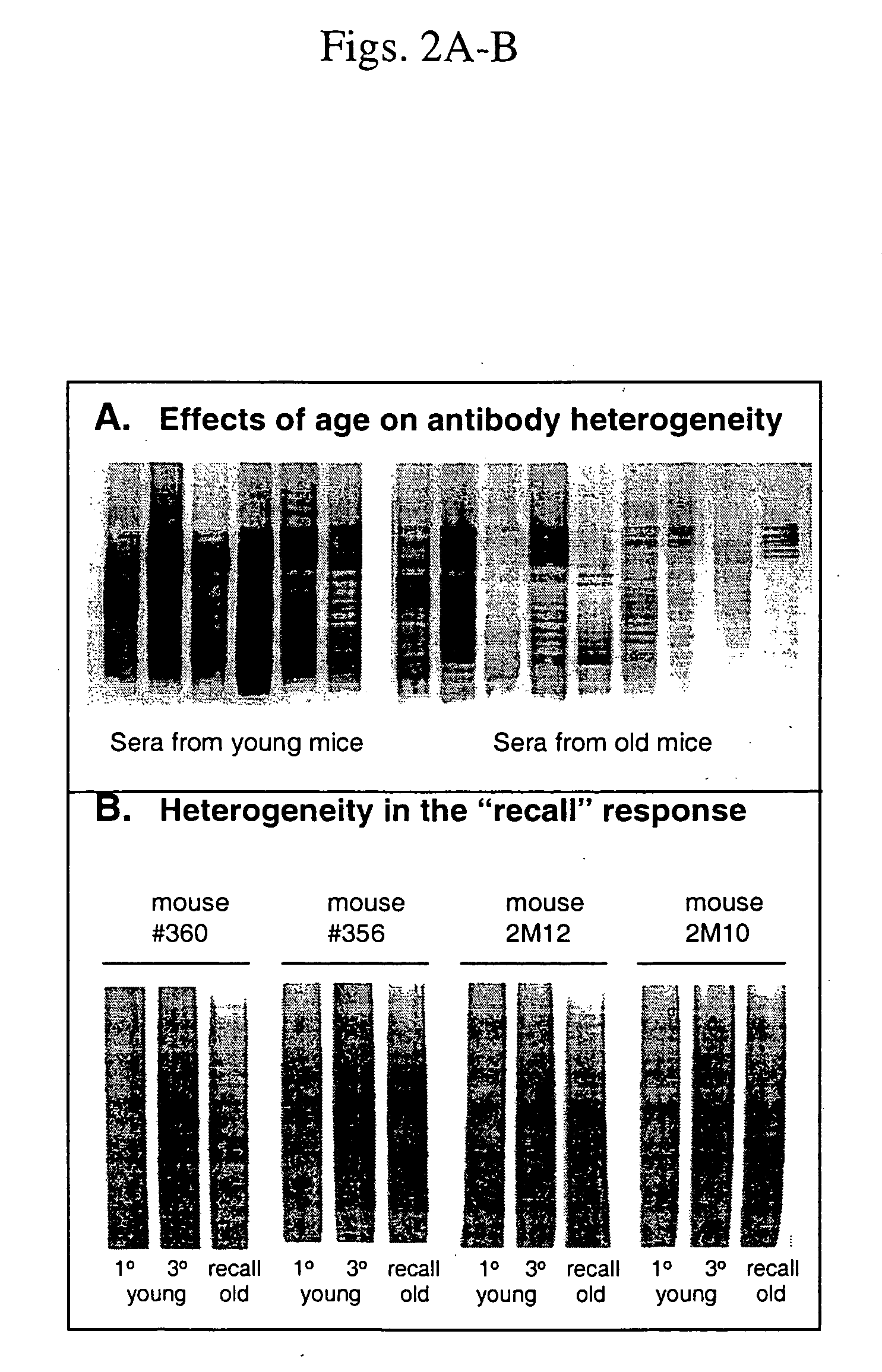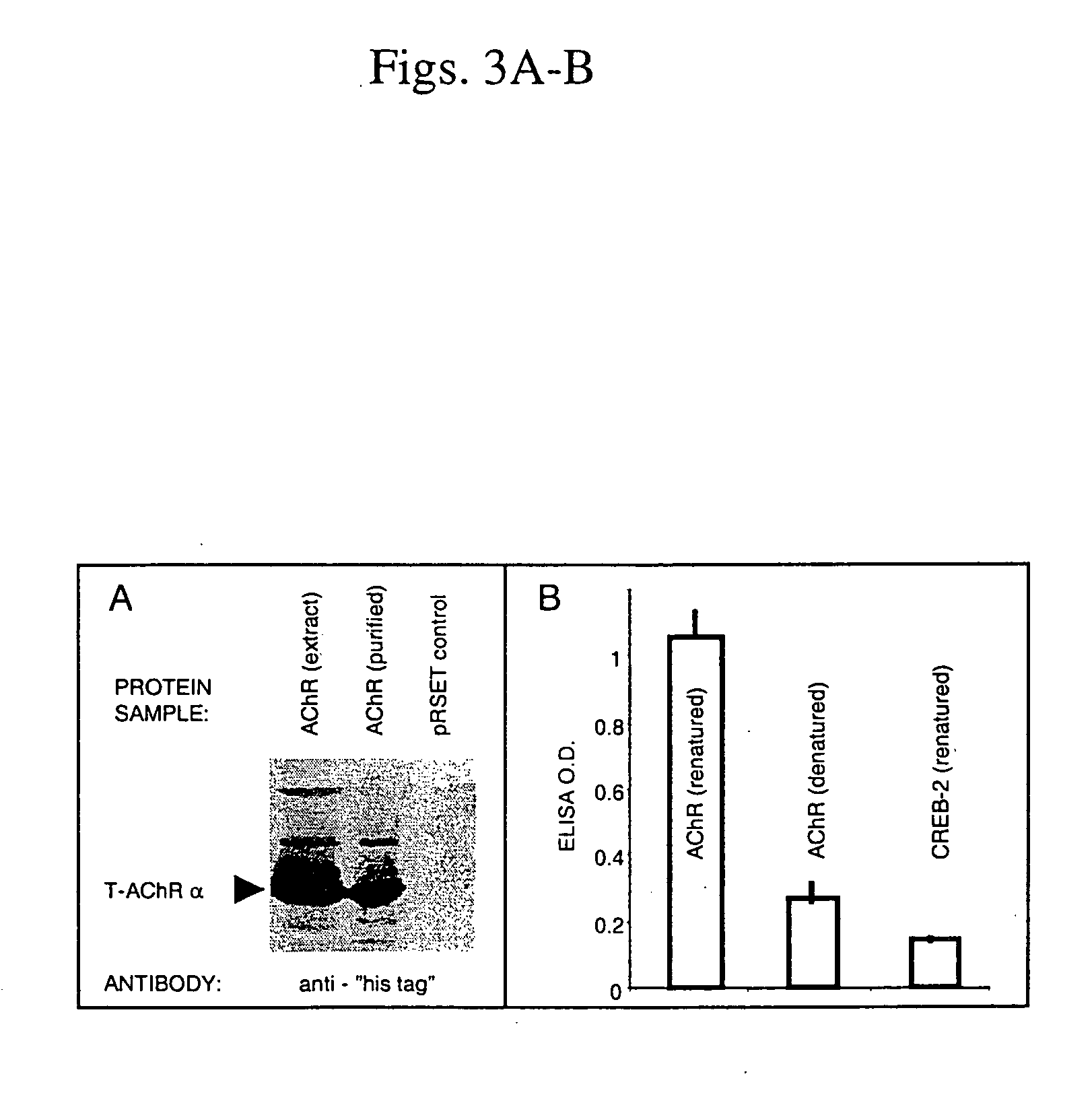Methods and compositions to enhance immune responses via recall antigens
- Summary
- Abstract
- Description
- Claims
- Application Information
AI Technical Summary
Benefits of technology
Problems solved by technology
Method used
Image
Examples
example 1
[0117] Effects of aging on the B cell response to T-AchR. To evaluate the age-associated decline in susceptibility to experimentally induced myasthenia gravis, the effects of age on the B cell and T cell responses to T-AChR were assessed. Mice in three age groups, 2, 10, and 20 months of age, were immunized with T-AChR in Complete Freund's Adjuvant (CFA). The mice were bled 4 weeks later and sera tested for the presence of antibodies to T-AChR using an ELISA. In response to a primary immunization, there was significantly less anti-T-AChR antibody in older mice (FIG. 1A, left panel). An age-related decline was also seen when responses were measured by specific isotypes, although the overall isotype profile was not altered (FIG. 1B). The decrease in B cell responsiveness to this complex antigen, AChR, was detectable as early as 10-12 months of age. Further studies were then carried out to determine whether there were fewer functional naive B cells in the older mice or that once activa...
example 2
Studies to Establish that Recall Memory T Cells can Modulate B Cell Responses to Novel Protein Antigens
[0121] Rationale. Exposure to antigens not previously encountered often results in reduced naïve and memory immune responses in the elderly. However, studies have shown that when immune memory is established in one's youth, it can survive aging and produce a vigorous recall response in old age (5-9,38). This more “youthful” T cell recall response is harnessed in the present invention to modulate antibody responses in older animals. Old mice will be immunized with a chimeric antigen containing both a carrier that was previously “seen” by the immune system and a “new” antigen against which a modulated antibody response is desired.
[0122] Choice of antigen. T-AChRα will be used as the recall “carrier” antigen. T-AChRα, the extracellular fragment of the α-chain, is routinely produced and renatured according to standard protocols. It has been shown to bind anti-T-AChR antibodies in an ...
example 3
Assessment of Whether the Response in Old Mice to the New Antigen can be Modulated by Delivery Through a DNA Vaccine that Encodes the Same T-AChR-TTFC Chimeric Protein
[0131] Rationale. The efficacy of a chimeric DNA vaccine will be tested. The vaccine will contain the coding regions T-AChR, a protein that was previously “seen” by the immune system and TTFC, and a new antigen against which a modulated antibody response is desired. Because identical immunogens will be used, a direct comparison of the protein vaccines described in Example 2 and the DNA vaccines of Example 3 will be made of the ability of both vaccines to generate an effective recall response in the elderly.
[0132] Establishing memory responses for later recall. The basic strategy of the experiments set forth in Example 3 will be identical to that already described in Example 2. The memory response will be established by immunizing two month old C57BL / 6 mice in multiple sites with a total of 10 μg of recombinant T-AChR...
PUM
| Property | Measurement | Unit |
|---|---|---|
| Composition | aaaaa | aaaaa |
| Immunogenicity | aaaaa | aaaaa |
Abstract
Description
Claims
Application Information
 Login to View More
Login to View More - R&D
- Intellectual Property
- Life Sciences
- Materials
- Tech Scout
- Unparalleled Data Quality
- Higher Quality Content
- 60% Fewer Hallucinations
Browse by: Latest US Patents, China's latest patents, Technical Efficacy Thesaurus, Application Domain, Technology Topic, Popular Technical Reports.
© 2025 PatSnap. All rights reserved.Legal|Privacy policy|Modern Slavery Act Transparency Statement|Sitemap|About US| Contact US: help@patsnap.com



